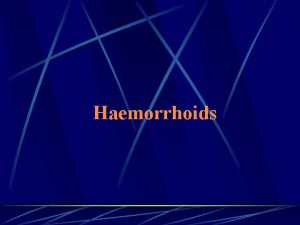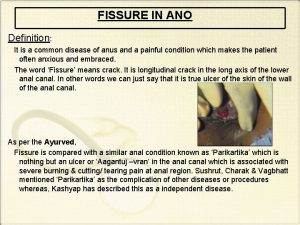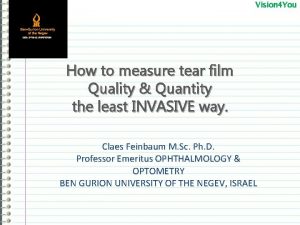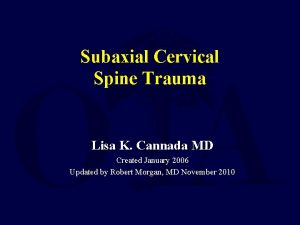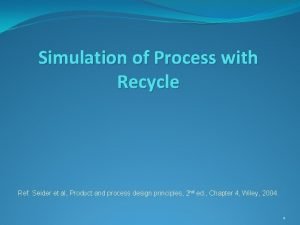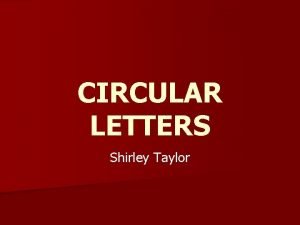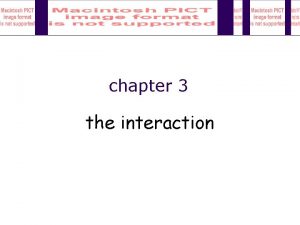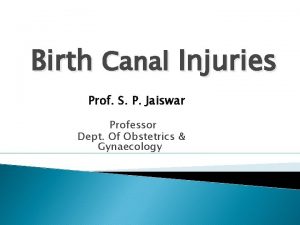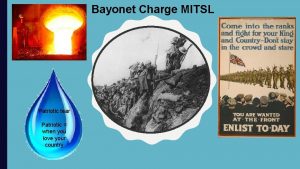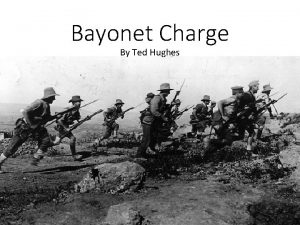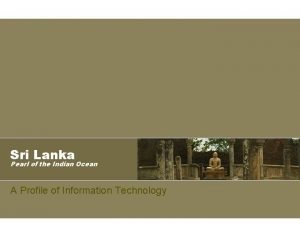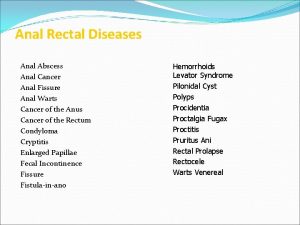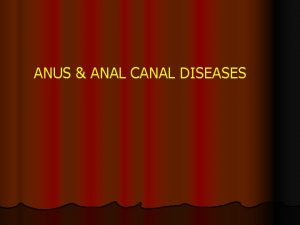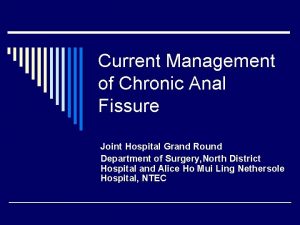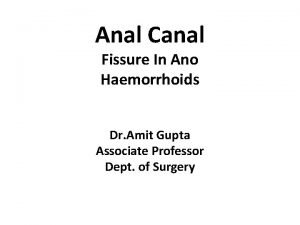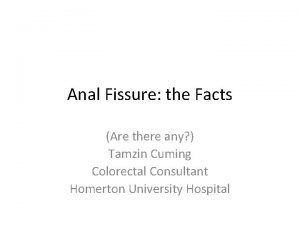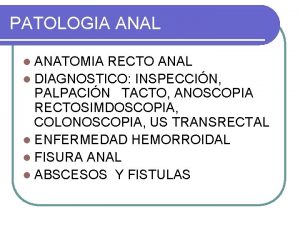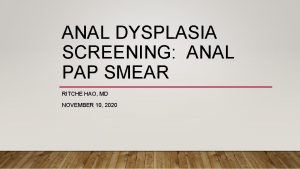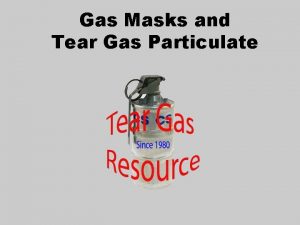ANAL FISSURE INTRODUCTION Fissure is a tear in












- Slides: 12

ANAL FISSURE

INTRODUCTION § Fissure is a tear in the anal canal extending from just below the dentate line to the anal verge. § Most commonly in young and middle age adults. § The cardinal symptom is pain during and for minutes to hours following defecation. § Bright red blood is common


INTRODUCTION § Over 90% of anal fissures are located in the posterior midline. § Almost all the rest located in the anterior midline. § The acute fissure is a "mere crack" in the anoderm. § Distal sentinel tag, a proximal hypertrophied anal papilla, fibrotic edges, and exposed internal sphincter fibres are features of chronicity

Etiology and Pathogenesis § The initiating factor is trauma, typically overstretching of the anoderm by a large hard stool. § The proposed explanation for the posterior midline predominance is a lack of tissue support and maximal stretching at this site. § Failure to heal is secondary to poor perfusion of the anoderm in the posterior midline. § Posterior midline ischaemia is the result of arterial anatomy and internal anal sphincter hypertonicity.

Treatment § Warm baths and a diet sufficiently high in fibre to achieve soft bulky stools allows approximately 50% of acute anal fissures to heal within three weeks. § Stool softeners and fibre supplements are reasonable additions. § Recurrence is common, in the range of 30 - 70%, but can be reduced to 15 - 20% by maintaining a high fibre diet

Acute Fissure Topical Application § Nitric oxide has been identified as the chemical messenger of the intrinsic non-adrenergic, non-cholinergic pathway mediating relaxation of the internal anal sphincter. § Topical application of nitroglycerin, a nitric oxide donor, causes a transient lowering of resting anal pressure and an increase in anodermal blood flow. § A 92% healing rate within two weeks for acute fissures treated with application of 0. 2% glyceryl trinitrate ointment t. i. d.

Acute Fissure Topical Application § Topical calcium channel blockers (2% diltiazem, 0. 3% nifedipine). § Heal 65 -95% of fissures. § The most common side effects are headache, flushing, and symptomatic hypotension.

Treatment Chronic Fissure § Topical Nitroglycerin: At eight weeks healing was observed in 68% of the GTN § Botulinum Toxin: Botulinum toxin has been injected into the external and internal sphincters and, with short term follow up, healing rates of 80% have been achieved.

Treatment Chronic Fissure § Are unlikely to heal with warm baths and a high fibre diet. § Internal Sphincterotomy : Lateral internal sphincterotomy (LIS) achieves healing in over 95% within several weeks § Anal Dilatation


 Enetritis
Enetritis Anal fissure
Anal fissure Tear film
Tear film Site:slidetodoc.com
Site:slidetodoc.com Aspen recycle stream not converging
Aspen recycle stream not converging Circular letter with tear off slip sample
Circular letter with tear off slip sample Tear past form
Tear past form Palettes and tear-off menus
Palettes and tear-off menus Periclitoral laceration repair icd 10 pcs
Periclitoral laceration repair icd 10 pcs Bullets smacking the belly out of the air
Bullets smacking the belly out of the air Threw up a yellow hare that rolled like a flame
Threw up a yellow hare that rolled like a flame Tear drop of india
Tear drop of india Dr. ullah springfield ohio
Dr. ullah springfield ohio
